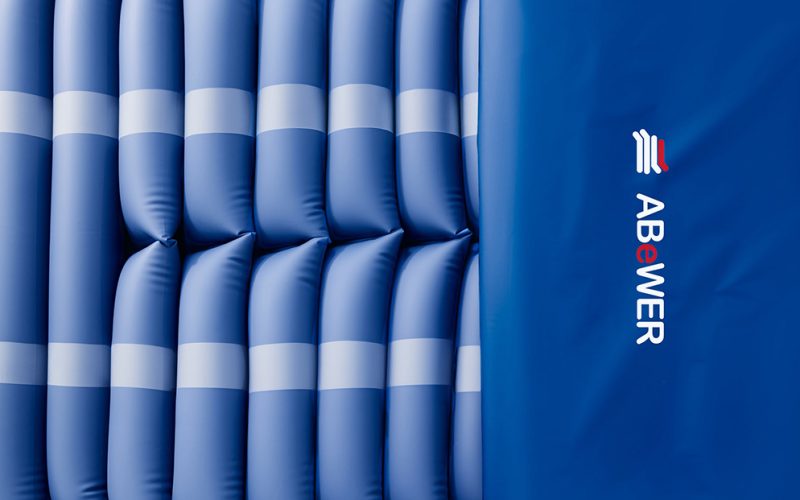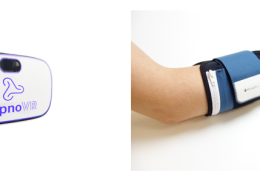The transition from hospital care to rehabilitation, long-term care, or home settings presents unique challenges for maintaining consistent pressure injury prevention. Patients who require ongoing protection from pressure ulcers need solutions that work effectively regardless of their care environment, staffing levels, or available resources.
Engineering automated lateral turning technology that performs reliably across hospitals, rehabilitation centers, nursing homes, and home care environments requires addressing vastly different operational requirements while maintaining the same clinical effectiveness.
Different Environments, Same Clinical Needs
Hospital intensive care units operate with sophisticated monitoring systems, specialized nursing staff, and controlled environmental conditions. Rehabilitation centers focus on patient mobility improvement while managing pressure injury risks during recovery periods. Long-term care facilities provide ongoing support for residents with chronic conditions requiring extended pressure management.
Home care environments present entirely different challenges: family caregivers with varying training levels, different electrical systems, space constraints, and the need for equipment that operates reliably without immediate technical support availability.
The multiTURN® 6 multifunction automated lateral turning mattress addresses these diverse requirements through engineering that prioritizes versatility without compromising clinical functionality. The system operates consistently whether connected to hospital-grade power systems or standard home electrical outlets.
Power Systems and Environmental Adaptability
Healthcare facilities worldwide use different electrical standards and power configurations. Engineering automated turning technology for global use requires systems that adapt to various voltage requirements while maintaining consistent performance characteristics.
The multiTURN® 6 operates on 220-240V power systems with appropriate adapters for different international configurations. This electrical flexibility ensures that the same pressure management technology functions reliably whether installed in a metropolitan hospital or a rural home care setting.
Environmental conditions also vary significantly between care settings. Hospital climate control maintains consistent temperature and humidity levels, while home environments experience seasonal variations and different air quality conditions. The system’s materials and components are engineered to perform reliably across these environmental differences.
User Interface Design for Different Skill Levels
Hospital nurses receive specialized training on medical equipment operation and troubleshooting. Home caregivers, family members, and staff in smaller care facilities may have limited technical training but still need to operate pressure management systems safely and effectively.
The multiTURN® 6 addresses this challenge through intuitive controls and clear operational indicators. The remote control system allows both healthcare professionals and trained family members to adjust patient positioning settings appropriately for different care situations.
Patient autonomy becomes particularly important in home care settings where immediate caregiver assistance may not always be available. The remote control feature enables patients with upper body mobility to manage their own positioning adjustments, supporting independence while maintaining pressure injury prevention protocols.
Maintenance and Support Across Settings
Hospital biomedical engineering departments typically handle medical equipment maintenance and repairs. Home care environments rely on manufacturer support networks and local service providers for technical assistance when equipment issues arise.
Engineering reliable automated turning systems for diverse environments requires robust construction that minimizes maintenance requirements while providing comprehensive support when needed. The multiTURN® 6 includes a 2-year warranty covering all components, reflecting confidence in long-term reliability under various use conditions.
Customer support teams understand that equipment downtime affects patient care immediately, regardless of care setting. Response protocols accommodate both institutional healthcare settings with backup equipment availability and home care situations where patients depend on single devices for pressure management.
Space and Installation Considerations
Hospital rooms are designed to accommodate complex medical equipment with appropriate space, electrical access, and ventilation requirements. Home bedrooms and smaller care facility rooms often have space constraints that affect equipment placement and operation.
The multiTURN® 6 dimensions (200 x 80 x 11.5 cm) and weight capacity (up to 180kg) are engineered to fit standard bed frames while providing clinical-grade pressure management. The system operates quietly at noise levels below 20 decibels, addressing concerns about equipment noise in residential environments.
Installation simplicity becomes crucial for home care applications where complex setup procedures aren’t practical. The system is designed for straightforward installation by trained distributors or healthcare equipment specialists without requiring extensive facility modifications.
Clinical Protocols Across Care Continuums
Pressure injury prevention protocols must remain consistent as patients transition between different care environments. A patient recovering from surgery may progress from ICU to medical floor to rehabilitation center to home care, requiring continuous pressure management throughout this transition.
The multiTURN® 6 provides adjustable cycle times that accommodate different clinical protocols while maintaining core pressure redistribution functionality. Lateral turning intervals can be set for 30, 60, or 90 minutes, with alternating pressure cycles adjustable from 12 to 24 minutes based on individual patient needs and care setting requirements.
This flexibility allows healthcare providers to maintain appropriate pressure management protocols regardless of care environment while adapting to specific patient conditions and risk factors that may change during recovery or disease progression.
Training and Education Requirements
Successful technology implementation requires appropriate training for all users across different care environments. Hospital staff typically receive formal equipment training through biomedical departments or clinical education programs. Home caregivers need training that covers safe operation, basic troubleshooting, and when to contact support services.
Automated lateral turning technology must be intuitive enough for family caregivers to operate safely while sophisticated enough to provide clinical-grade pressure management. The multiTURN® 6 design balances these requirements through clear controls and automated functions that minimize user error while maximizing patient safety.
Documentation and training materials accommodate different educational backgrounds and technical familiarity levels, ensuring safe operation whether the user is a registered nurse in an ICU or a family member providing home care.
Economic Considerations Across Settings
Cost considerations vary significantly between institutional healthcare settings and home care environments. Hospitals and care facilities typically evaluate equipment costs within broader budgets that include staffing, facility overhead, and comprehensive patient care expenses.
Home care situations often involve direct family expenses, insurance coverage considerations, and rental versus purchase decisions based on anticipated use duration. The multiTURN® 6 is available through distributor networks that can accommodate different financial arrangements appropriate for various care settings.
Economic benefits of automated pressure management apply across all care environments through consistent pressure injury prevention, reduced manual repositioning requirements, and improved patient comfort during extended immobility periods.
Quality Assurance and Regulatory Compliance
Medical device regulations ensure that automated turning systems meet safety and performance standards regardless of where they’re used. CE certification demonstrates compliance with medical device regulations covering both institutional healthcare and home care applications.
The same quality standards apply whether the multiTURN® 6 operates in a hospital ICU or a home bedroom. Regulatory compliance ensures that patients receive equivalent pressure management effectiveness regardless of their care environment.
Quality assurance protocols verify consistent manufacturing standards that support reliable operation across different use conditions and environments. This consistency provides healthcare providers and families with confidence in clinical outcomes regardless of care setting.
Technology Evolution and Future Applications
Engineering automated turning technology for multiple care environments drives innovation that benefits all users. Requirements for home care reliability and simplicity improve hospital equipment durability. Hospital clinical effectiveness standards enhance home care therapeutic outcomes.
The multiTURN® 6 represents current advancement in pressure management technology that addresses real-world care delivery across diverse environments. Future development continues focusing on versatility, reliability, and clinical effectiveness that serve patients regardless of their care setting.
As healthcare delivery increasingly emphasizes care transitions and patient-centered approaches, automated pressure management technology provides continuity that supports consistent clinical outcomes throughout different phases of care and recovery.









